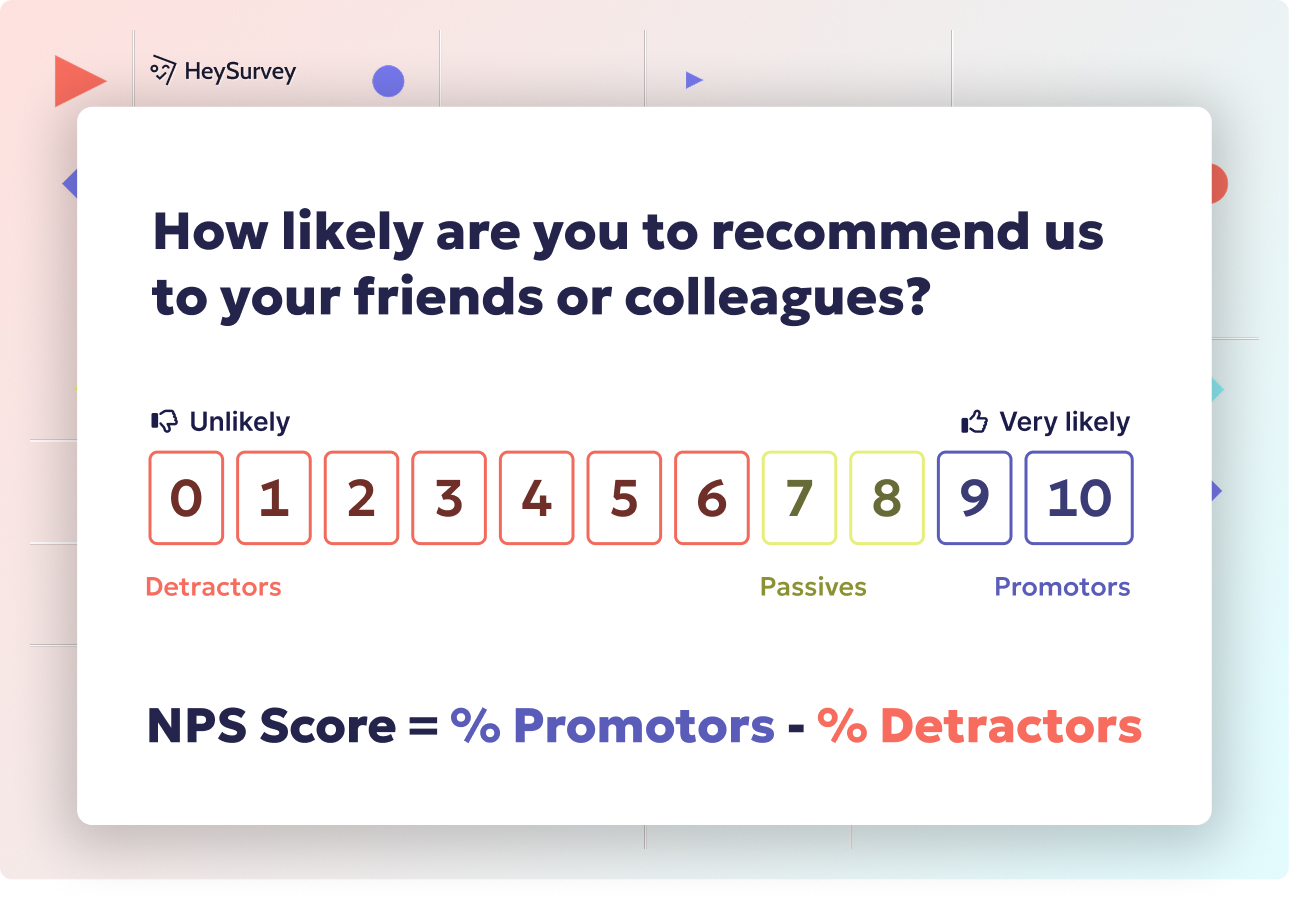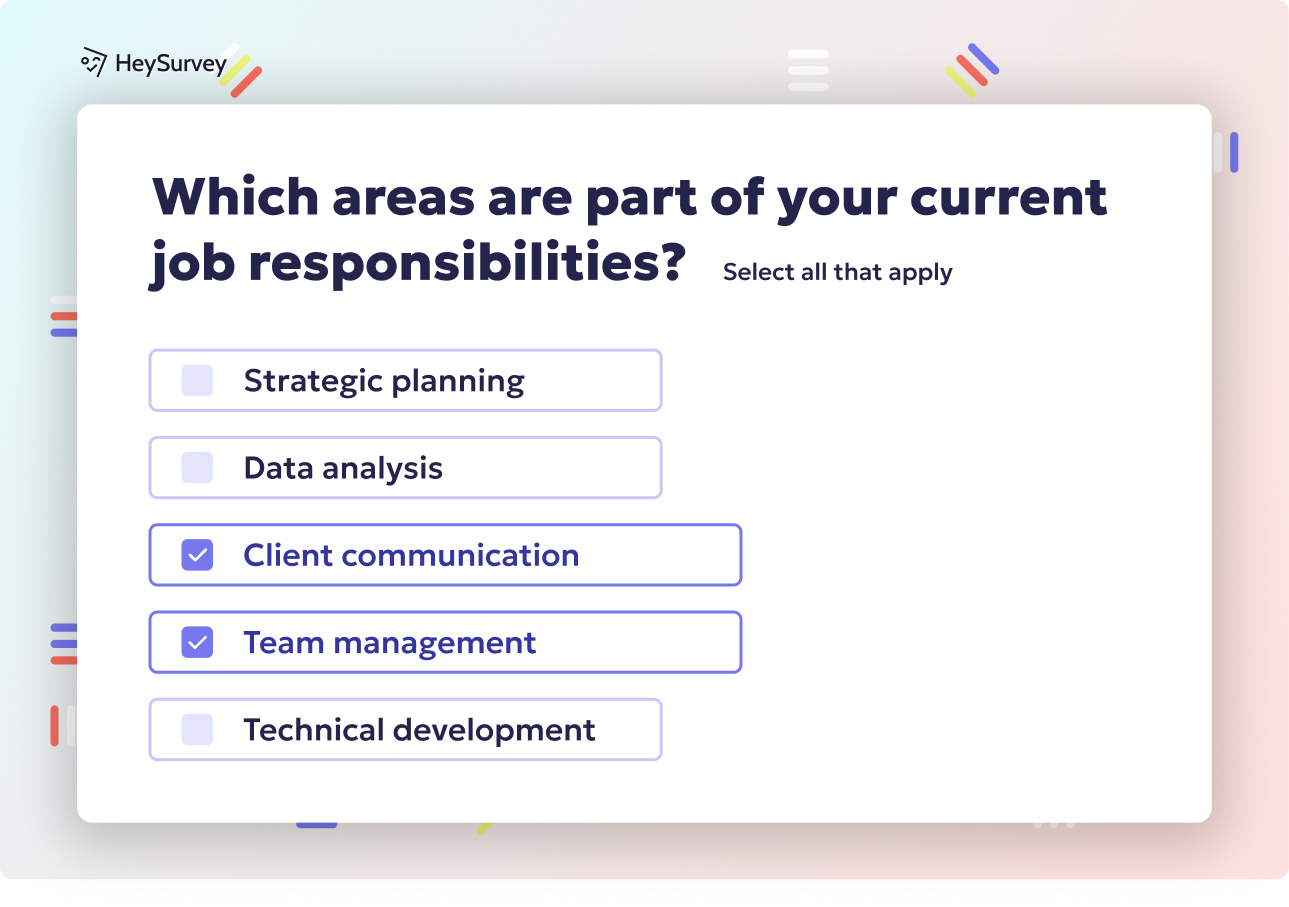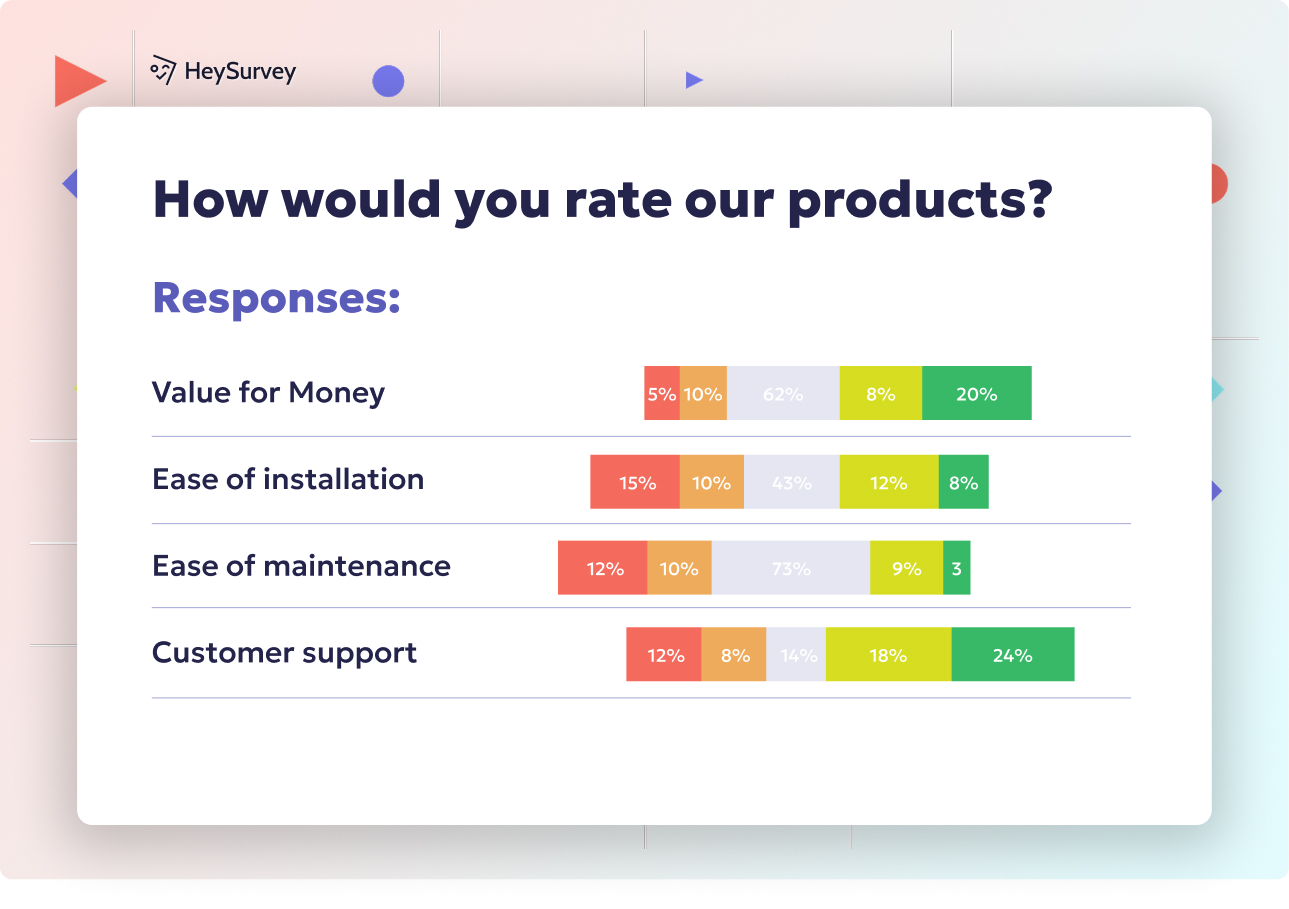32 Onboarding Survey Questions to Boost New-Hire Success
Discover 30+ onboarding survey questions with expert tips to capture, analyze, and act on new-hire feedback for smoother onboarding.
Onboarding surveys are the secret sauce for creating extraordinary first impressions and building teams that stay. These pulse-checks whisk away confusion, deliver personalized welcomes, and reveal golden opportunities to make every new hire productive faster. Whether you’re itching to know when to drop those feedback forms, which milestones (from pre-boarding to day 90) matter most, or what it actually means to collect meaningful feedback, you’re in the right place. This playful guide serves up actionable templates for seven must-have onboarding surveys, practical timing tips, and the sharpest best-practice advice you’ll find this side of HR town.
Introduction: Why Onboarding Surveys Matter and When to Deploy Them
Defining Onboarding Surveys
Onboarding surveys are purpose-built questionnaires delivered to new employees at strategic moments in their first weeks and months. These feedback tools reduce time-to-productivity by busting through confusion, giving HR early warnings for potential churn, and smoothing out any onboarding bumps before they become employee regrets.
Why They Matter
• They boost retention by preventing misunderstandings or misaligned expectations that can drive new hires away in the critical early window.
• They give leadership and HR teams real-time data to continuously refine the onboarding journey.
• They provide visibility into how effectively teams are embedding new colleagues into culture, training, and workflows.
Key Decision Points: Timing and Frequency
Deciding when to send onboarding surveys is half the battle. You can optimize results by: - Deploying surveys at critical milestones like pre-boarding, day one, day 30, and day 90. - Mixing quick pulse checks and more detailed deep dives. - Keeping a close eye on survey frequency to avoid overwhelming your new hires.
Types of Onboarding Surveys You’ll Master
Across this guide, you’ll discover: - Pre-Onboarding Expectations Surveys - First-Week Experience Surveys - Training & Resources Feedback Surveys - 30-Day Check-In Surveys - 60- & 90-Day Integration Surveys - Cultural Fit & Engagement Pulse Surveys - Onboarding Exit Surveys
Get ready for actionable templates, shrewd advice on perfect survey timing, and the best ways to turn raw feedback into onboarding magic.
Organizations with strong onboarding processes can improve new hire retention by up to 82%. (apps365.com)

Creating your onboarding survey with HeySurvey is a breeze—even if you’re new to the platform. Just follow these 3 easy steps to get your survey live and collecting feedback in no time:
Step 1: Create a New Survey
- Head to the HeySurvey dashboard and click “Create Survey.”
- Choose your preferred starting point: pick an onboarding survey template we prepared for you, start with a blank sheet, or type your questions for auto-formatting.
- Give your survey a clear internal name so you can find it easily later, like “First-Week Experience Feedback.”
Step 2: Add Your Questions
- Click “Add Question” at the top or between existing ones to add your first question.
- Choose the question type that fits best (e.g., scale, multiple choice, or open text).
- Enter your question text and any description if needed.
- Use the sample questions provided in this guide or tailor your own!
- Mark questions as required if you want to ensure answers before moving on.
- Spice it up with images from Unsplash or Giphy, or duplicate questions to save time.
Step 3: Publish Your Survey
- When your questions look good, click “Preview” to see how it appears to respondents and make tweaks if needed.
- Once happy, hit “Publish” to get a shareable link for your new hires to access.
- Note: you’ll need an account to publish and collect responses—if you don’t have one yet, signing up is quick and free.
Bonus Step: Apply Branding
- Upload your company logo in the top-left corner to make the survey feel welcoming and on brand.
- Open the Designer Sidebar to customize colors, fonts, backgrounds, and animations.
Bonus Step: Define Survey Settings
- Set start and end dates to control survey availability.
- Limit the number of responses if needed.
- Add a redirect URL to send respondents somewhere after completion, like a thank-you page.
- Enable or disable allowing respondents to view survey results, ideal for some question types.
Bonus Step: Use Branching to Personalize the Flow
- If you want different paths based on answers, configure branching rules for each choice.
- Create multiple endings or redirect respondents depending on their input for a more tailored experience.
Ready to jump in? Click the button below to open your onboarding survey template in HeySurvey and start customizing right away!
Pre-Onboarding Expectations Survey
Why & When to Use This Survey
Pre-onboarding surveys fill a critical gap by capturing new-hire expectations before day one. After all, nothing ruins the excitement quite like radio silence between offer acceptance and start day! This survey, sent in the sweet spot after the offer is accepted but before the first day, helps uncover: - Unmet expectations about work setup or early projects. - Equipment needs or system access requirements. - Hidden concerns or simple logistical questions that may cause “new-hire’s remorse” if ignored.
Deploying this survey ensures that HR can personalize welcome experiences—from “Hello!” emails to ensuring laptops arrive on time. It’s an invaluable step for preventing anxiety and showing you’re already invested in your new hire’s journey, well before day one.
5 Sample Questions to Ask
Here are five golden questions to include:
How clear are you about what your first week will look like? (Likert scale 1–5)
Which tools or access credentials will you need on day one? (Checklist)
What excites you most about joining our company? (Open-ended)
Are there any concerns you’d like us to address before your start date? (Open-ended)
Which communication method do you prefer for pre-start updates? (Multiple choice)
Using these questions, you’ll quickly spot and solve potential onboarding blockers before Monday morning rolls around. This proactivity speaks volumes to anxious new hires and makes “new-hire’s remorse” practically impossible.
Implementing pre-onboarding surveys can significantly enhance new hire satisfaction and retention by addressing concerns and setting clear expectations before the first day. (testgorilla.com)
First-Week Experience Survey
Why & When to Use This Survey
The first-week experience survey captures the freshest, most unfiltered reactions from your new team members. You want to strike while the memory is hot—ideally right after the initial whirlwind of meetings, team intros, and paperwork is done. Think of it as a backstage pass to your welcome show.
You’ll discover: - Whether orientation covered the right bases. - Which small touches (or wild hiccups) shaped their impression. - Early indicators about whether they feel included and set up for success.
This feedback is pure gold for identifying gaps in clarity, training, and early culture immersion. Use it to course-correct before tiny missteps snowball into bigger issues.
5 Sample Questions to Ask
Boost engagement and spot opportunities by asking:
Rate how welcome you felt on your first day. (5-point scale)
Which part of orientation added the most value? (Multiple choice + ‘Other’)
How confident do you feel about your role responsibilities? (Scale)
Did you have access to all necessary systems and tools? (Yes/No + comment)
What could we improve about the first-week agenda? (Open-ended)
Responses reveal hidden onboarding surprises—both delightful and disastrous—that your team can immediately act on. Plus, this survey reassures new hires they’re already being heard and valued.
Training & Resources Feedback Survey
Why & When to Use This Survey
A training & resources feedback survey is the ultimate post-training pulse. You’ll want to send it right after your formal onboarding sessions or any role-specific training modules are done, while details are still fresh.
This survey asks: - Did the content make sense, or did jargon win the day? - Were the formats engaging (think videos vs. endless PDFs)? - Is anything missing that would help them to work independently?
Capturing this feedback helps you improve training effectiveness, clarify the most confusing topics, and perfect your learning resources for future hires.
5 Sample Questions to Ask
To amp up the learning experience, use questions like:
How useful were the training materials in helping you perform your tasks? (Scale)
Which training format worked best for you? (Video, live demo, written guide, etc.)
Were any topics missing from the curriculum? (Open-ended)
How would you rate the instructor’s expertise? (Scale)
Do you feel prepared to work independently after the training? (Yes/No + comment)
With these insights, you can refine your onboarding curriculum and make your learning materials stand head and shoulders above the competition.
Effective onboarding surveys should assess training relevance, clarity, engagement, and preparedness to work independently, enabling continuous improvement of the onboarding process. (kodosurvey.com)
30-Day Check-In Survey
Why & When to Use This Survey
After a whirlwind first month, the 30-day check-in delivers a reality check on how well your onboarding process is working. This is the moment you find out if your new hires are actually ramping up, or just treading water and praying for a lifeboat.
Key reasons to deploy at day 30: - Assess how clearly new hires understand their performance goals and what “good” looks like. - Uncover obstacles before they become productivity blockers or points of frustration. - Identify morale issues and catch early warning signs before they escalate.
Regular 30-day check-ins provide data for timely coaching and process tweaks that transform rookie months into long-term retention stories.
5 Sample Questions to Ask
Elevate your 30-day survey with questions like:
How clear is your understanding of success metrics for your role? (Scale)
Have you established meaningful relationships with your team? (Scale)
What obstacles, if any, are hampering your productivity? (Open-ended)
How aligned do you feel with our company values? (Scale)
Suggest one thing we could do to improve your first 30 days. (Open-ended)
Combining clarity checks with open-ended prompts guarantees insights that spark impactful coaching and real improvement.
60- & 90-Day Integration Survey
Why & When to Use This Survey
Combining the 60- and 90-day surveys creates a double-shot of insight into the long-term integration and engagement of your new hires. By this point, employees have had enough time to move past first impressions and develop real opinions about their place in the culture and their readiness to deliver.
Here’s what this milestone measures: - Readiness to commit to a longer-term relationship with the company. - Deeper understanding of cross-team collaboration. - Success of programs and support systems in helping new folks adapt.
Deploying this survey at both day 60 and 90 lets you track integration, engagement trends, and flag development needs before your new hire “honeymoon” ends.
5 Sample Questions to Ask
Unlock deeper integration feedback with:
Do you envision yourself growing your career here in the next 2–3 years? (Yes/No + why)
Rate your overall job satisfaction. (Scale)
How effectively do cross-functional teams support your work? (Scale)
Which company programs or resources have helped you most? (Multiple choice)
What improvements should we prioritize for future hires? (Open-ended)
This approach ensures you’re not just onboarding—but successfully integrating talent who want to stick around.
Cultural Fit & Engagement Pulse Survey
Why & When to Use This Survey
Measuring cultural fit isn’t just about warm fuzzies. The engagement pulse survey is a quick, tactical tool that can be deployed any time in the first 90 days when you want to check if employees feel connected, understood, and genuinely valued.
Using this survey, you can: - Spot new hires who are quietly disengaging. - Understand if your values are resonating (or just corporate wallpaper). - Pinpoint early wins and areas where your culture needs a nudge.
Early detection ensures you keep talent from slipping away, preventing regret-driven attrition.
5 Sample Questions to Ask
Gauge belonging and early engagement with these questions:
I feel my opinions are valued by my team. (Strongly disagree—Strongly agree)
I understand how my work contributes to the company mission. (Scale)
I feel comfortable giving feedback to my manager. (Scale)
I would recommend this company as a great place to work. (eNPS 0–10)
What one change would most improve our culture for new hires? (Open-ended)
Consistently running these pulse checks is a foolproof way to detect disengagement before it becomes a resignation letter.
Onboarding Exit Survey (Day 90 or Program Completion)
Why & When to Use This Survey
The onboarding exit survey is where you step back and ask, “How did we do?” It’s the capstone piece, delivered after the formal onboarding period—typically day 90 or at the end of a structured onboarding program.
Here’s why timing is everything: - New hires have enough distance to honestly assess the complete onboarding experience. - Feedback covers the whole journey—from pre-boarding to full integration. - The data feeds your continuous improvement engine and helps you calculate onboarding ROI.
The power of this survey is all in the holistic, end-to-end insights it uncovers.
5 Sample Questions to Ask
Use these questions to get a comprehensive review:
Overall, how satisfied are you with your onboarding experience? (Scale)
Which onboarding element had the greatest positive impact? (Multiple choice)
Which element needs the most improvement? (Multiple choice + comment)
How prepared do you feel to excel in your role going forward? (Scale)
Would you suggest any resources we should add to the onboarding plan? (Open-ended)
Each response is pure fuel for turning “okay” onboarding into industry-best experiences.
Best Practices: Dos and Don’ts for High-Impact Onboarding Surveys
Dos for Better Onboarding Surveys
Mastering onboarding surveys is all about small changes with outsized impact. Follow these power moves:
• Segment by role or department so feedback is meaningful and relevant.
• Keep surveys short—ideally 10 minutes or less—to avoid fatigue and boost completion rates.
• Follow up on feedback within 48 hours so employees feel heard and valued.
• Automate reminders to gently nudge busy new hires who forget.
• Benchmark results quarter-to-quarter to spot trends and improve your process over time.
• Design for mobile-first so surveys are easy to complete anywhere, not just at a desk.
• Send at optimal times: usually late morning or mid-afternoon, when employees aren’t running between meetings.
• Offer ethical incentives—but never make participation mandatory or tied to performance ratings.
• Boost response rates by explaining why their feedback truly matters.
• Link survey insights to actionable KPIs, like ramp-up speed and 90-day retention rates, for real business impact.
Don’ts for Better Onboarding Surveys
Here are the no-go zones if you want to maximize results:
• Don’t overload new hires with surveys back-to-back in the first month.
• Don’t ask leading or loaded questions—keep them clear and neutral for authentic answers.
• Don’t ignore anonymity—offer it whenever possible, especially for feedback that might feel risky to give.
• Don’t let feedback data sit idle—schedule regular reviews and act on what you find.
• Don’t measure only once—onboarding is a journey, not a checkbox.
A steady focus on simplicity, timing, and genuine follow-up wins you consistently higher response rates and delivers insights that spark real change.
Conclusion & Action Plan
Great onboarding surveys are simple, fun, and actionable. Nail your timing, craft stellar questions, and make feedback loops a habit instead of an afterthought.
Here’s your three-step action plan:
- Select the right mix of surveys for your company’s structure.
- Build your customized templates using the sample questions above.
- Set up easy-to-read analytics dashboards to track improvement over time.
Ready to wow your next new cohort? Download your free onboarding survey template pack—or go bold and start a risk-free 14-day trial of your favorite survey platform today.
Related Onboarding Survey Surveys

32 60 Day Check-In Survey Questions: Examples & Best Practices
Explore 60 day check in survey questions with 25+ sample questions, use cases, and best practices...

31 Customer Onboarding Survey Questions to Improve Adoption
Discover 40 customer onboarding survey questions designed to improve product adoption, gather onb...

30 Day Review Survey Questions: 30 Essential Sample Questions
Explore 30 day review survey questions with 30+ sample questions designed to boost onboarding, en...


